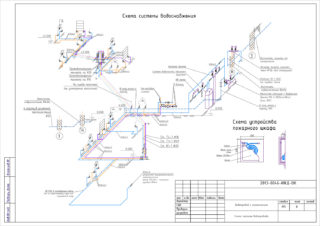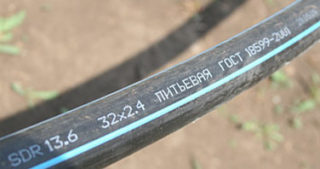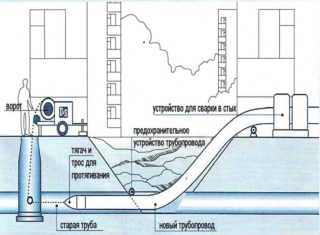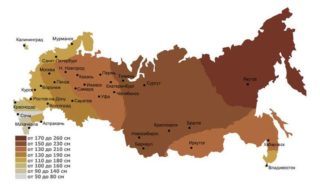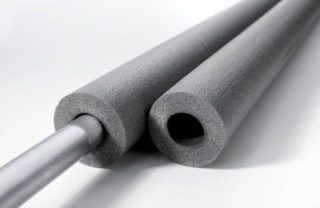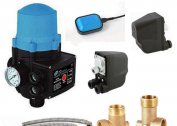When constructing a private house, water supply is carried out at the stage of construction of the foundation. The use of modern materials simplifies the process, it can be done independently without involving professionals. If you take into account all the nuances, it is realistically to install a drainage system without high costs and as soon as possible.
Initial stage of work
Before laying a water or sewer pipe underground, you need to make a project. It must be as accurate as possible, otherwise the piping system will not be functional.
In the design documentation, the presence of the following information is mandatory:
- features of the old highway, if there is a replacement of communications;
- soil quality - light, clay, rocky;
- the area of the site where the pipeline will be, taking into account the branches and entrances;
- estimate of construction and repair work.
The installation of an external water supply system is carried out only on a leveled site. Otherwise, there may be problems with the water supply due to pipe deformation.
Technical specifications for buried systems
Depth of laying is specified in special rules - SNiPakh. All the nuances of working with products from a variety of materials are registered there. The minimum depth is one and a half meters. In general, this level depends on the depth of freezing of the soil. The pipeline should be deepened below the level of frozen soil. In regions with a cold climate, the trunk will have to be buried deeper, otherwise it will deform under the influence of low temperatures.
The nuances of the correct installation of a water supply system are described in a special document: “State Elementary Estimated Norms for Construction Work” (GESN).
In the middle lane, water pipes should be laid 1.6 meters from the surface, then they will not freeze and bend in winter with severe frosts.
Suitable pipes for laying in the ground
Traditionally, steel welded or seamless products are used for these purposes, preferably with galvanizing, which protects against rust. However, now they are replaced by polypropylene and plastic options, for example, PND PN10. They have many advantages:
- resistance to corrosion and temperature extremes;
- increased working pressure - up to ten atmospheres;
- ease of installation - polyethylene pipes are easy to bend.
An important plus is the budget price. This factor makes the cost of laying water pipes from propylene pipes in the ground per linear meter lower than steel ones.
The diameter of the pipe for laying in the soil according to GOST should not be less than 3.2 cm. The length of a standard product is 240 cm.
Groundwater construction technology
Work on laying any water supply pipes is carried out in one of two ways: with or without digging a trench. The choice of method depends on many factors: the presence of old communications, the composition of subsidence soil, the location of the water-saturated layer. In order not to make mistakes when installing the line with your own hands, it is worthwhile to clarify all the points with specialists first.
Trench method
 If it was decided to immerse the water main in a previously dug trench, operate according to the following technology:
If it was decided to immerse the water main in a previously dug trench, operate according to the following technology:
- Digging a long ditch with a depth of one and a half meters and more - depending on the climate. Width - 50 cm.
- The walls and bottom of the track are compacted. Since water will go under pressure, unlike sewage, it is not necessary to make a slope.
- A shock-absorbing sand and gravel pillow about 15 cm falls asleep.
- The pipes are insulated, then they are laid on a pillow and articulated by fittings.
- Connecting nodes are covered with a heater.
- Outlets are connected to the ends of the line for connection to a pump, if the section is equipped with a well or to a central network, as well as to a home wiring.
- The moat is covered with sand, and above it with earth.
It is advisable not to concrete the surface of the site, but to lay the tiles so that in case of malfunctions it is possible to open the coating without problems and eliminate them. To get the wiring in the house, you need a hammer. He can also drill holes for hidden communications. In a wooden building, an electric drill and a jigsaw are used for these purposes.
Trenchless option
The cost of this type of installation is higher, but it has certain advantages. No need to change the landscape of the site, time costs will be less.
The trenchless version of the water pipe has three varieties:
- Relining. The inner space of the old pipes is filled with new polyethylene.
- Renovation. It is planned to simultaneously dismantle old communications and replace them with new ones. It is carried out in those cases when the used pipes of insufficient section.
- Horizontal directional drilling. HDD is carried out with diameters greater than 150 millimeters. The method involves puncturing the soil without damaging the top layer.
The technology for laying a full water supply from an HDPE pipe by horizontal drilling in the ground requires the use of special equipment - a hydraulic jack. Two pits are dug on both sides of the facility, under which communication will be carried out. The jack is placed on one side. He horizontally clogs through the soil layer a pipe on which a steel tip is worn. After laying, the trunk is connected to the same systems as in the trench version.
On small sections, for example, under an asphalt road, horizontal drilling is carried out using a special drill with a rod screwed to it. Clogging is carried out with an ordinary sledgehammer.
Cost of work per meter
The prices for laying the water supply depend on the chosen technology and on the cross-section of the pipe - the larger it is, the more expensive the work will be.
Price per linear meter for laying water pipes in the ground:
| Type of installation | Estimated cost (in rubles) |
| Reliting | From 1000 |
| Renovation | From 1500 |
| Horizontal directional drilling | From 1500 |
| Trench | From 500 |
The complexity of the site, the urgency of order execution and additional services, such as insulation, will lead to a rise in price.
Possible errors and difficulties
The main points that can cause problems, experts include:
- incorrectly selected pipes;
- lack of sand and gravel cushion under the highway;
- neglect of the assessment of soil composition and temperature features of the climate;
- weak tightening of crimping nuts, fittings.
The ends of the pipes must not be left open, otherwise debris and sand will fall into them.
Even in the southern regions, pipes need to be buried no less than one and a half meters and heat insulation material should be used. Otherwise, even a short-term decrease in temperature will lead to their deformation. If the frost hits, the water in them will simply freeze.
When bringing the water supply to the house, do not rush to fill up the trench. First you need to do a test run to identify possible problems and timely eliminate errors. Immediately before filling, thoroughly inspect all the connections again, make sure that the system is functioning correctly.
Pipe insulation methods
Thermal insulation of water pipes is necessary. In particular, this applies to the ground part of the pipe, located on the street and in unheated rooms.
As a heater, a non-combustible and moisture-resistant material should be chosen that will not swell when in contact with condensate. It must be resistant to environmental influences, temperature extremes.
From sheet materials, thermal fiber and basalt cotton wool are used. They retain heat well, but require an external waterproofing layer.
A convenient and inexpensive material is polystyrene foam. Cases of it are sold in hardware stores. All that is required is to enclose the pipe in a heat shield and seal several layers of adhesive tape. Heat insulators made specifically for pipes are convenient when working with corners and turns.
Expanded polystyrene is used for both external and internal works, while it is quite durable, which contributes to its repeated use if it is necessary to dismantle the system.
If you place the water supply inside another pipe, an air cushion is formed between their walls, which retains heat. But this is an additional measure, insulation will still be required.
So that the water does not freeze, special electric cables for heating and a warm floor are used as a heater. Thanks to them, the pipes do not freeze even in the cold. But here you need to consider the additional costs of electricity.
If you comply with all the rules for underground utilities, you can independently install high-quality water supply, which will last for more than one year.
